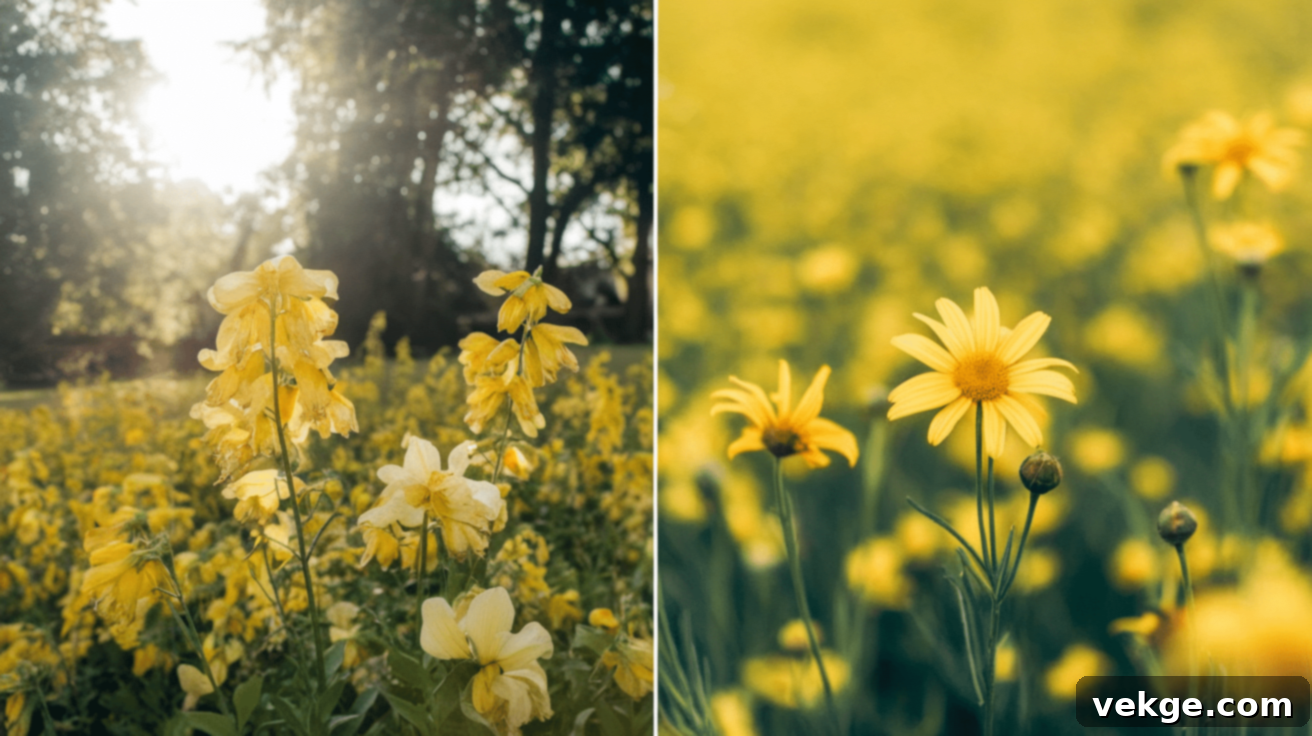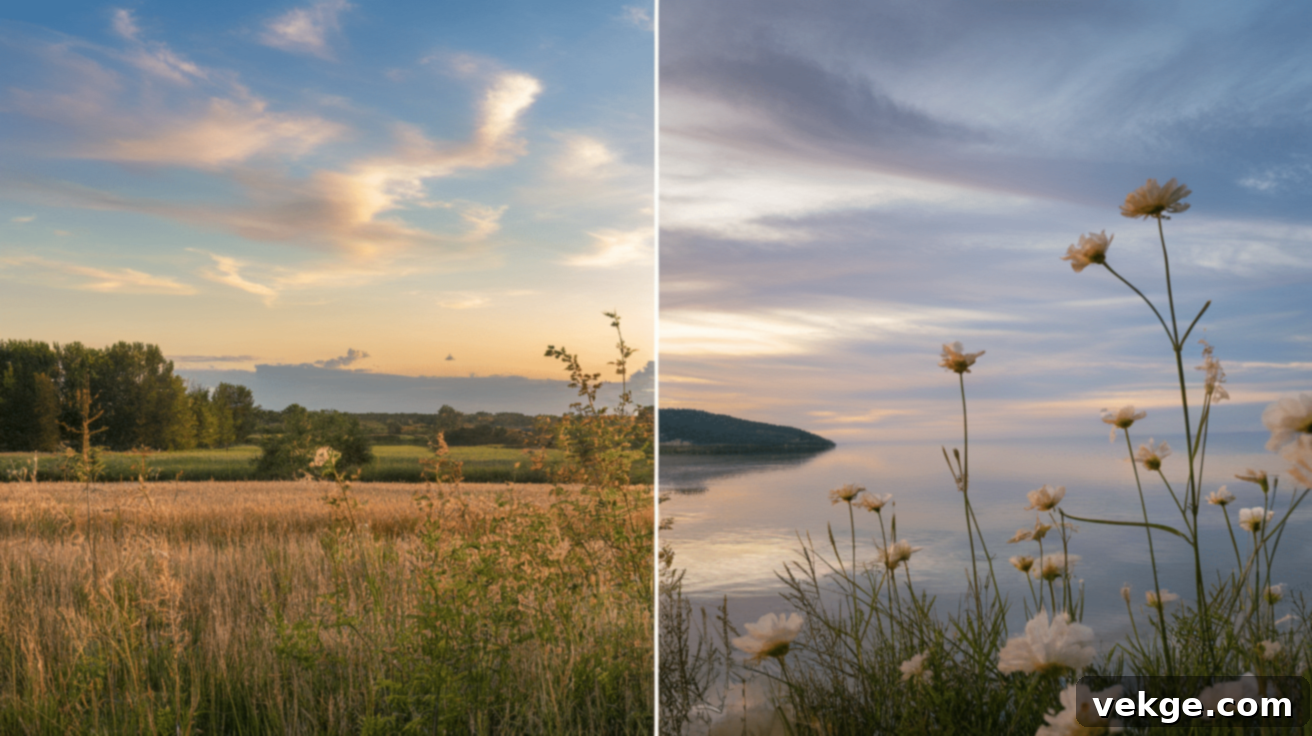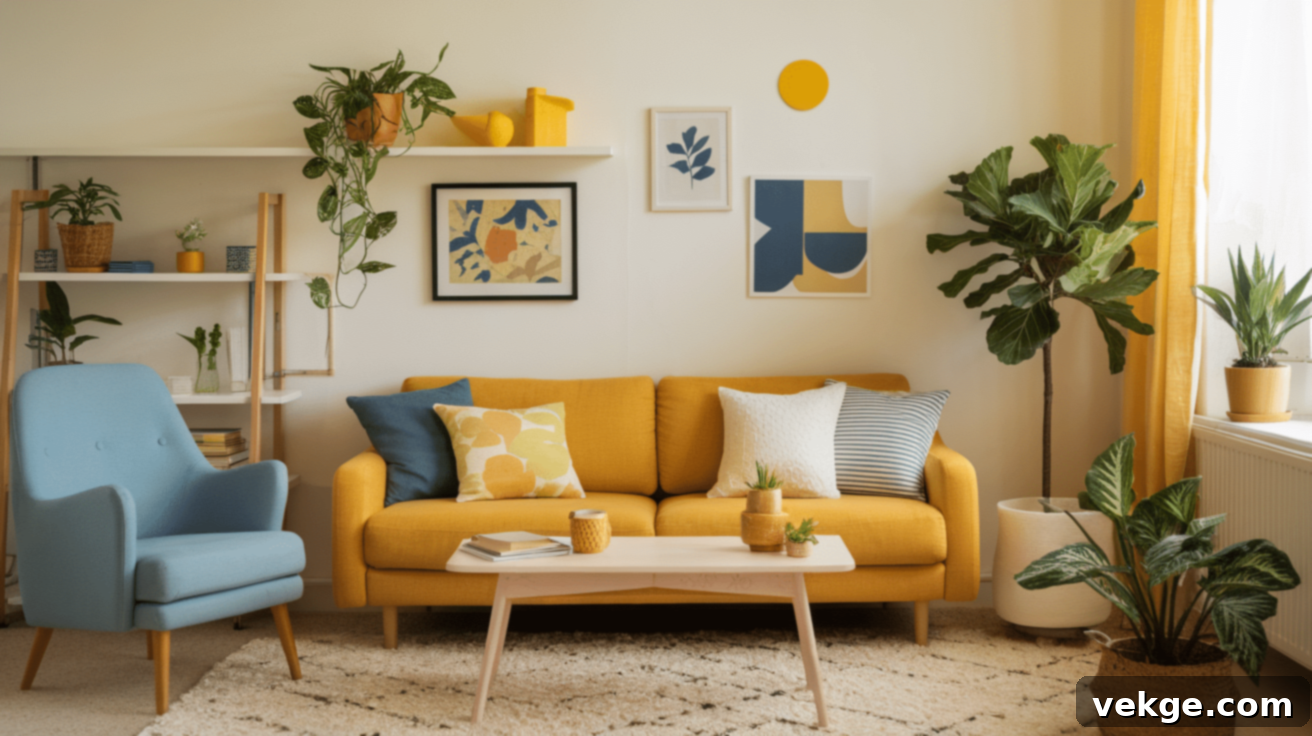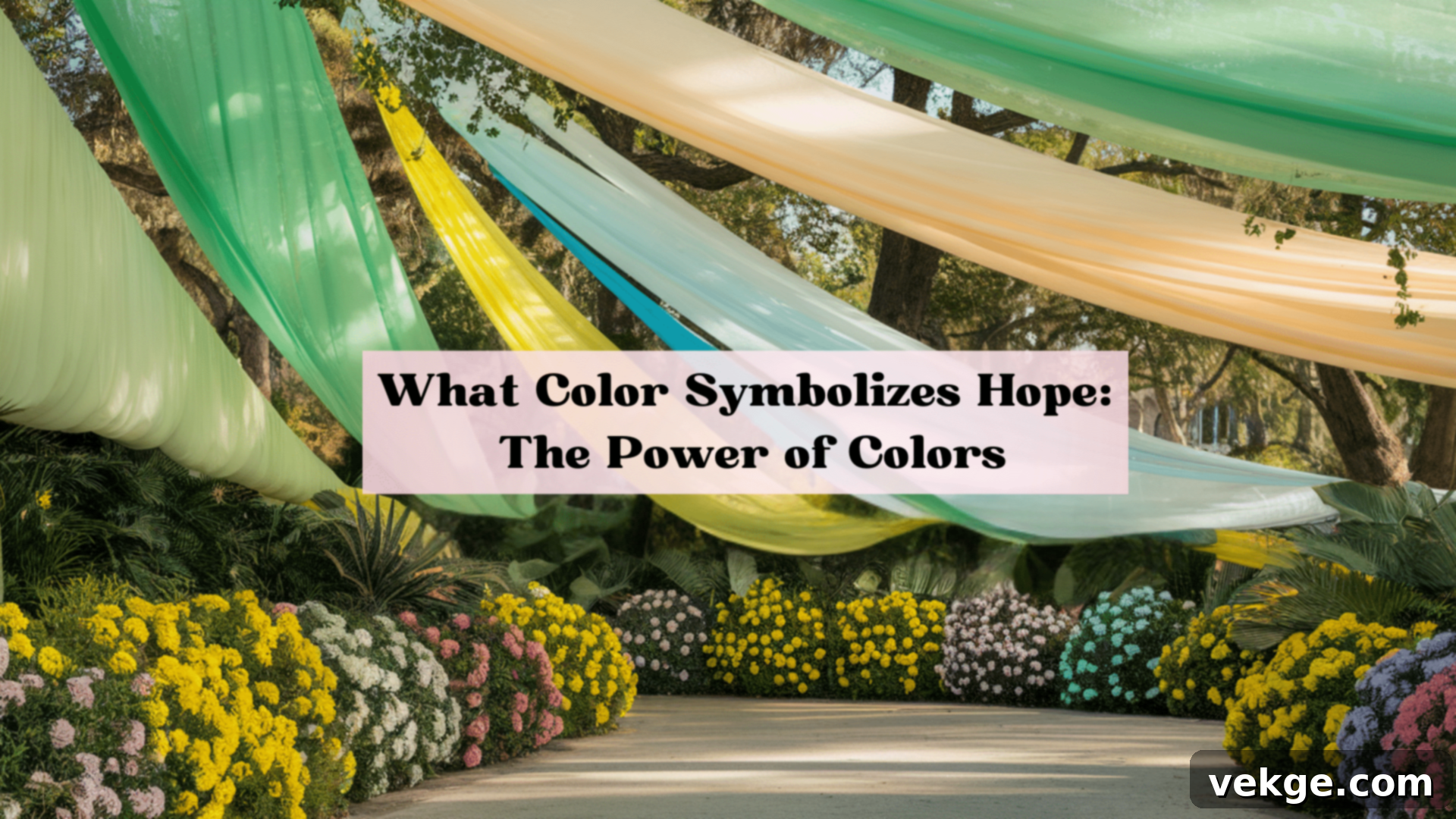The Empowering Palette: Discovering the Colors That Symbolize Hope and Inspire Optimism
Colors possess an extraordinary power, a silent language that speaks directly to our emotions, influences our perceptions, and subtly shapes our daily experiences. Far more than mere visual stimuli, certain hues resonate deeply within the human psyche, acting as powerful symbols that can uplift our spirits and ignite a profound sense of hope. Throughout history and across diverse cultures, specific colors have consistently emerged as beacons of light, guiding us through moments of challenge and reminding us of brighter days ahead.
When we immerse ourselves in the vibrant spectrum of colors, we encounter more than just light waves; we tap into a universal lexicon of emotion and meaning. Green whispers of new beginnings, yellow beams with the promise of joy, blue instills a sense of calm resilience, and soft pastels offer gentle comfort. These hues are not just painted on canvases or dyed into fabrics; they are woven into the very fabric of our lives, influencing our mood, our thoughts, and our outlook on the future, often without us consciously realizing their profound impact. Let us embark on a journey to explore how these remarkable colors bring light, solace, and a renewed sense of possibility into our world.
Green: The Universal Symbol of Hope, Growth, and Renewal

If hope were to manifest as a color, green would undoubtedly be its most prominent embodiment. This profound connection is deeply ingrained in the human experience, transcending geographical boundaries and historical eras. Green speaks to a fundamental understanding of life’s cyclical nature, reflecting the very essence of existence and the promise of continuity.
Growth and The Cycle of Life
Green is the color of an emerging world, a vibrant testament to growth and vitality. It captures that exquisite moment when life reclaims its dominance after the dormancy of winter. Picture the first tender shoots pushing through fertile soil, the delicate unfurling of fresh leaves on what were once bare, lifeless branches, or the lush expanse of a thriving forest. This palpable, visible evidence of life’s relentless continuation provides a powerful metaphor for hope in our own journeys. In times of adversity, green serves as a potent reminder that renewal invariably follows difficulty. Just as gardens blossom anew after the harshest frosts, and forests regenerate with stunning resilience after devastating fires, so too can our individual lives find new pathways forward, blossoming with fresh purpose after experiencing loss, change, or hardship. This inherent symbolism of resilience makes green an enduring beacon of optimism.
The Psychological Comfort of Green
Beyond its symbolic significance, green exerts a measurable and calming influence on our minds and bodies. Scientific studies have consistently demonstrated that exposure to green natural environments or even just images of green landscapes can lead to a reduction in blood pressure, a decrease in heart rate, and a notable alleviation of muscle tension. Positioned centrally within the visible light spectrum, green requires less effort for our eyes to process, making it inherently soothing and restful. This natural ease contributes to its frequent application in environments designed for healing and tranquility, such as hospital walls, waiting rooms, and therapeutic spaces. The presence of green fosters a profound sense of balance and harmony, encouraging deeper breathing, clearer thought, and an overall feeling of well-being, thus nurturing the seeds of hope even amidst the most challenging circumstances. It invokes the biophilia hypothesis, suggesting an innate human connection to nature and all living systems.
Yellow: The Radiant Color of Happiness, Optimism, and Enduring Hope

Yellow possesses an undeniable magnetism, drawing our gaze like no other color with its inherent brightness—a vivid reflection of the sun itself. This warm, luminous hue has an almost magical ability to awaken our senses, invigorate our spirits, and spontaneously turn our thoughts toward the promise of brighter, more joyful days ahead. It’s the color of enthusiasm, illumination, and intellectual clarity.
Sunshine, Joy, and Positive Energy
More than any other color, yellow embodies the essence of pure sunlight, bringing its warmth and life-giving energy into our internal and external worlds. It heralds the arrival of spring, painting fields with the cheerful faces of daffodils and dandelions, unequivocally declaring the end of winter’s somber reign. Across countless cultures, this brilliant color is instinctively perceived as a natural emblem of joy, vitality, and celebration. From the soft, golden glow of the morning sun piercing through a window to the comforting flicker of candlelight in the darkest hours, yellow actively dispels gloom and chases away shadows. Its mere presence often acts as an unconscious mood elevator, a spontaneous burst of cheer that brightens our outlook without us even fully comprehending its subtle power.
The Stimulating Role of Yellow in Cultivating Hope
Yellow’s influence on our psyche is decidedly active and invigorating. Unlike the more tranquil colors that promote peaceful reflection, yellow directly stimulates our mental processes, enhances alertness, and provides a significant boost to our energy levels. This cognitive uplift is crucial when navigating challenges, as it empowers us to look beyond immediate problems and actively seek out potential solutions. Yellow helps us maintain focus, stay engaged, and approach difficulties with a renewed sense of vigor. It is no mere coincidence that many tools designed for note-taking, highlighting, or drawing attention—as well as universal caution signs—frequently employ yellow; its primary function is to capture and sustain our attention effectively. This very quality makes yellow an invaluable ally during periods when hope feels elusive, gently prompting us to remain present, look forward with optimism, and resist the urge to surrender to despair.
Beyond Green and Yellow: Other Colors Associated with Hope and Serenity

While green and yellow often take center stage as the most direct conveyors of hope, several other magnificent hues contribute significantly to lifting our spirits and fostering unwavering confidence in the future. These colors, each with its unique character, offer different facets of hope, from profound tranquility to gentle encouragement.
1. Blue: The Color of Calm, Trust, and Steadfast Hope
Blue provides a unique form of steady, unwavering hope that contrasts beautifully with the dynamic energy of brighter colors. Like the expansive, clear sky after a refreshing rain, or the deep, supportive embrace of the ocean, blue offers a foundational sense of stability and reliability. This ubiquitous color possesses an innate ability to reduce stress, calm the nervous system, and promote crystal-clear thinking. The profound trust we instinctively place in blue stems from its constant and reassuring presence in our natural world – the endless sky above and the vast waters that have sustained human civilization throughout millennia. This deep, primordial trust forms the very bedrock of how blue helps us maintain hope and perspective, particularly during times of intense challenge and uncertainty. It symbolizes depth, wisdom, and truth, all components necessary for enduring hope.
2. Soft Pastels: Gentle Hues of Delicate Hope and New Beginnings
The lighter, softer versions of various colors – such as pale pink, serene light lavender, refreshing soft mint green, and ethereal sky blue – communicate messages of hope in quieter, yet equally profound, ways. These gentle, muted tones create an immediate sense of spaciousness and tranquility within our minds, offering a welcome respite from the often-overwhelming intensity of daily life. The inherent softness of pastels intrinsically reminds us of new beginnings and innocence: the delicate blush of baby items, the first fragile blossoms of spring, the serene colors of a dawn sky. Each carries an implicit message of fresh starts and gentle possibilities. When life feels overwhelmingly harsh, chaotic, or intensely demanding, these tender colors can wrap us in a comforting embrace, much like a soft blanket, creating a quiet, nurturing space where hope can slowly, gently, and confidently re-emerge.
The Profound Psychological Effects of Hopeful Colors on Well-being
Extensive research in color psychology consistently demonstrates that specific colors have the remarkable capacity to profoundly lift our spirits, calm agitated minds, and instill within us a powerful sense of optimism and possibility. Understanding how these colors interact with our brains and emotions can empower us to consciously integrate them into our lives for enhanced well-being.
How Colors Directly Influence Mood and Cognition
The spectrum of hopeful colors—primarily green, yellow, and blue—exerts a significant and measurable impact on our mental and emotional health. Green, the quintessential color of nature, growth, and vitality, is proven to reduce stress and alleviate anxiety, while simultaneously promoting feelings of calm, harmony, and renewal. Yellow, mimicking the life-giving warmth of sunlight, acts as a natural antidepressant, boosting energy levels, stimulating cognitive functions, and fostering feelings of unbridled optimism and cheerfulness. Blue, with its deep associations with the sky and ocean, is known to lower blood pressure and heart rate, creating a profound sense of peace, stability, and security precisely when these qualities are most needed. These effects are not merely subjective; studies using fMRI and other neuroimaging techniques show that exposure to certain colors can indeed alter brain activity, neurotransmitter release (like serotonin and dopamine), and even influence the production of hormones linked to stress and mood regulation.
Leveraging Hopeful Colors in Environmental Design
Consciously incorporating these colors into your daily surroundings is a highly effective strategy for boosting your overall outlook and cultivating a more positive atmosphere. Consider painting a bedroom or a quiet reading nook in a soft, tranquil shade of blue to create a serene sanctuary conducive to rest and peaceful contemplation. Integrate vibrant yellow accents—such as throw pillows, decorative objects, or a bright piece of art—into areas where you desire an extra burst of energy, creativity, or social interaction, like a kitchen or living room. Green plants are an ideal, natural way to infuse any space with life, freshness, and the calming essence of nature, promoting clarity of thought and reducing feelings of confinement. In professional or study areas, judicious use of blue accents can enhance focus and concentration, while touches of yellow in gathering spaces can foster a more sociable and upbeat ambiance. Even seemingly minor changes, such as selecting colorful textiles, fresh flowers, or expressive artwork in these hopeful hues, can profoundly shift a room’s entire mood and, by extension, positively influence your own state of mind and emotional resilience.
Cultural Tapestry: The Diverse Meanings of Hope in Colors
The universal language of color is often filtered through the rich and varied lens of human culture, with each society imbuing specific hues with unique meanings that reflect its distinct history, values, and environmental context. While some color associations with hope are remarkably widespread, others are deeply specific, illustrating the fascinating diversity of human experience.
- In Western societies, green stands as a preeminent symbol of hope, directly linked to the seasonal renewal of spring, the lushness of nature, and the promise of growth after winter’s dormancy. It signifies fresh starts and prosperity.
- Many Asian cultures frequently associate yellow with hope, often connecting it to the life-giving sun, imperial power, enlightenment, and auspicious prosperity. In some traditions, it symbolizes sacredness and wisdom, offering a hopeful path.
- In various African traditions, blue is deeply associated with hope, particularly through its profound connection to rain – a vital and life-sustaining element in many arid regions. Rain brings renewal, fertility, and the promise of a bountiful harvest.
- Celtic customs often view specific shades of light green as powerful signs of healing, rebirth, and good fortune, reflecting their reverence for the natural world and its restorative powers.
- In Buddhist practices, white holds immense spiritual significance, representing purity, enlightenment, and the ultimate path to spiritual growth and liberation, offering hope for inner peace.
- In Mexico, green is a significant color on the national flag, symbolizing independence, new beginnings, and the hope for a prosperous future.
- Japanese culture often perceives light blue as representing fresh starts, new beginnings, and purity, frequently seen in spring festivals and traditional art.
- Middle Eastern traditions link the calming and protective hue of turquoise with good fortune, healing, and spiritual well-being, bestowing hope and protection.
These diverse color associations are not arbitrary; they are deeply rooted in each culture’s unique environment, historical narratives, religious beliefs, and prevailing worldview. They underscore the incredible power of color to embody abstract concepts like hope in tangible, culturally resonant ways, reminding us that while hope is universal, its visual representation can be beautifully varied.
Harmonizing Your Environment: How to Use Colors Symbolizing Hope in Your Space

Thoughtfully integrating colors associated with hope into your personal environment is one of the simplest yet most effective ways to consciously uplift your mood, reduce stress, and cultivate a more positive and optimistic atmosphere. Here’s how you can strategically weave these powerful hues into your home or workspace:
Strategic Integration Tips:
- Embrace Green’s Natural Touch: Introduce green through living plants—ferns, succulents, or larger foliage—to instantly bring a sense of natural growth, freshness, and vitality into your space. Complement this with green throw pillows, ceramic pots, or nature-inspired artwork to reinforce feelings of renewal and tranquility.
- Cultivate Calm with Blue: Utilize light blue in bedrooms, meditation rooms, or quiet study areas. Think of soft blue curtains, plush rugs, or accent walls to create an expansive, serene, and calming sanctuary that promotes restful sleep and clear thinking. Deeper blues can add stability in more formal settings.
- Inject Joy with Yellow: Reserve brighter yellows for kitchens, dining areas, or creative workspaces where you desire an extra burst of warmth, energy, and social interaction. Use yellow dishware, cheerful small decorations, or even a strategically placed vase of sunflowers to add a sunny disposition without overwhelming the space. Consider softer yellows for a more subtle glow.
- Consider Accent Walls: If a full room repaint feels too daunting, paint just one accent wall in a hopeful color. This creates a significant impact and focal point without the full commitment, allowing you to experience its effects.
- Thoughtful Color Combinations: Pair blue and green together for a harmonious, nature-inspired palette that fosters peace and balance. Add small, strategic touches of yellow to this combination to introduce gentle energy and optimism without disrupting the overall serenity.
- Incorporate Natural Materials: Blend hopeful colors with natural materials like warm wood, textured stone, or woven fibers. These elements complement the colors beautifully, adding an organic, grounding balance to the space and enhancing the feeling of comfort and authenticity.
- Small Touches, Big Impact: Remember that even seemingly minor additions—a green throw blanket, a yellow candle, a blue vase, or a piece of abstract art incorporating these colors—can profoundly alter a room’s energetic signature and positively affect your psychological outlook.
By being mindful of the colors you surround yourself with, you can actively shape an environment that consistently supports your emotional well-being and fosters an enduring sense of hope and optimism in your daily life.
Conclusion: Embracing the Enduring Power of Hopeful Colors
The journey through the spectrum of hopeful colors reveals a profound truth: colors are not just visual phenomena; they are potent psychological tools and cultural symbols that actively shape our inner worlds. Green firmly anchors us to the concepts of growth, resilience, and unending renewal. Yellow bathes us in the comforting warmth and vibrant promise of sunshine, igniting joy and optimism. Blue offers a steadfast embrace of calm, stability, and deep trust, providing a soothing anchor amidst life’s storms. Together, and individually, these colors have rightfully earned their esteemed place as universal symbols of hope across the vast tapestry of human history and diverse cultures.
By consciously integrating these uplifting shades into your home environment, your personal wardrobe, your creative projects, or even the digital interfaces you interact with daily, you are actively inviting their inherent positive qualities and energetic vibrations into your life. We encourage you to become more attuned to how different colors personally affect your mood, your energy levels, and your overall outlook. Use this newfound awareness to intentionally craft spaces and experiences that consistently support your emotional well-being, nurture your inner peace, and elevate your perspective. The mindful application of the right colors has the power to transform hope from an abstract concept into a tangible, daily experience, enriching your life with endless possibilities and unwavering optimism.
